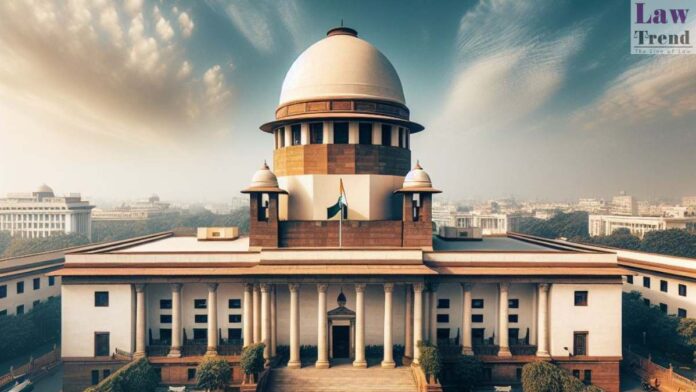The Supreme Court on Monday made it clear that Delhi-NCR’s pollution crisis cannot be addressed by short bursts of emergency measures. Instead, the court pushed for a coordinated, long-term strategy while refusing to impose year-round restrictions under the Graded Response Action Plan (GRAP).
A bench led by Chief Justice B R Gavai, along with Justices K Vinod Chandran and N V Anjaria, said the framework of graded measures under GRAP is based on scientific assessments and cannot simply be extended throughout the year.
“We do not possess expertise to deal with the same. We are therefore not inclined to act on the submission that all activities prohibited from GRAP 1 onwards be stopped in Delhi,” the CJI said, responding to a plea that sought blanket year-long prohibitions in the capital. The court added that a significant portion of Delhi’s population depends on these activities for their livelihood.
Reiterating its concern over stubble burning, the court directed Punjab and Haryana to strictly follow the Commission for Air Quality Management’s (CAQM) recommendations.
“If the CAQM’s suggestions to Punjab and Haryana are implemented, then stubble burning can be adequately tackled. Thus, we direct both states to have a combined meeting and ensure that the CAQM’s suggestions are scrupulously implemented,” the bench said.
The Union environment minister’s recent meeting on November 11 was also noted, with the court expecting the Centre to firm up a comprehensive plan. Additional Solicitor General Aishwarya Bhati has been asked to present a “complete plan of action” on November 19.
Senior advocate Gopal Sankarnarayanan urged the court for stronger curbs, arguing that Delhi’s air has turned into a “gas chamber”. But the bench maintained that pollution needs to be tackled through a long-term, graded approach rather than blanket prohibitions.
The court added that only a sustained, multi-state response involving the Ministry of Environment, Forest and Climate Change and officials from Punjab, Uttar Pradesh, Rajasthan and Haryana can address the crisis.
The bench also asked the Delhi government to submit an affidavit clarifying the equipment used for measuring air quality, after the amicus curiae, senior advocate Aprajita Singh, pointed to news reports and videos suggesting that water was being sprayed around AQI monitoring stations.
“There are videos and newspaper reports. Sprinkling is happening around AQI monitors,” she told the court.
The ASG countered that these videos were politically motivated, claiming water was being sprayed citywide as part of routine pollution control.
The court has asked Delhi to file a response by Wednesday, explaining the nature and efficiency of its AQI monitoring systems.
GRAP triggers restrictions based on AQI levels:
- GRAP I: AQI 201–300 (poor)
- GRAP II: AQI 301–400 (very poor)
- GRAP III: AQI 401–450 (severe)
- GRAP IV: AQI above 451 (severe+)
The court stressed that these are emergency responses meant to be proportional to pollution levels, not permanent fixtures.
The bench noted a crucial concern raised by the amicus: despite Punjab reporting fewer stubble-burning incidents, pollution levels have not dropped. This mismatch, the court said, highlights the need for deeper systemic solutions rather than seasonal firefighting.
The case will continue on November 19, when the court is expected to issue further directions after reviewing the Centre’s action plan.







